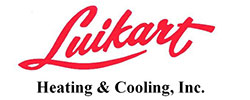
A furnace is almost always a background player in your home, helping keep you warm across the cold winter months. It frequently isn't noticed until a malfunction appears.
One root cause may be that your furnace has a cracked heat exchanger. It can potentially be hazardous, so it’s critical to know the evidence of a cracked heat exchanger and what you can do if you believe that may be the problem.
What Is a Heat Exchanger in a Furnace?
A heat exchanger helps move heat from the combustion chamber inside your furnace to the air that circulates through the air ducts. It usually does this via coils or tubes that heat up the air while functioning as a barrier to keep gas formed in the combustion chamber, called flue gasses, from getting out into your home.
Is a Cracked Heat Exchanger Dangerous?
Because of its central role, it isn't surprising that a broken heat exchanger can pose a risk. A damaged heat exchanger can enable dangerous gasses – such as carbon monoxide, which can be lethal – to circulate through your home.
For this reason, do NOT run your furnace if you think there's a crack in the heat exchanger, as letting it run could make your entire family sick. Call an HVAC professional right away if you think your heater has a cracked heat exchanger that needs repair.
Four Symptoms of a Cracked Heat Exchanger:
- Furnace shuts off: A crack in your heat exchanger may cause your furnace to turn off.
- Odd Smells: If the air leaving your furnace has a strong chemical odor, it might be evidence gasses are slipping through cracks in your heat exchanger. These gasses, which may smell like formaldehyde, are a common warning sign.
- Carbon monoxide alarm is triggered or you feel health problems: If a cracked heat exchanger is releasing carbon monoxide in your home, your carbon monoxide alarm may go off or household members may start experiencing signs of carbon monoxide poisoning. Side effects include headaches, dizziness, weakness, nausea, vomiting or feeling drowsy. If an alarm goes off or you feel unusually tired, leave the home right away and then call for help.
- Soot: If you find black sooty buildup on the exterior of your furnace, it’s more evidence something may be seriously wrong.
What to Do if a Furnace Heat Exchanger is Cracked
If you believe your furnace has a cracked heat exchanger, hire a pro with extensive experience in furnace installation Newark right away so they can inspect your system and, if required, start a furnace heat exchanger replacement. Costs should vary depending on the situation, but estimates often hover around $1,000 to $3,000.
Estimates aside, the good news is that heat exchangers are regularly protected by the warranty. You’ll want to check the warranty paperwork on your furnace, as while the warranty may not cover the entire cost of repairs, it still may significantly reduce your bill.
How to Avoid a Cracked Heat Exchanger in Your Home
One of the easiest ways to prevent a problem in your furnace overall is with routine furnace maintenance. Furnaces provide the best possible return on investment when they work efficiently. Hiring a skilled professional to inspect your furnace for worn-out parts, clogged filters and other common problems can help you avoid getting a big bill later on.
It’s also helpful to take a look at your furnace filters every few months – it’s encouraged some filters be swapped out every 90 days or sooner if they are dirty or grimy. While the filters are not part of the heat exchanger itself, the strain of pulling air through a clogged filter makes the entire furnace work harder to accomplish its job. And the harder your furnace has to work, the more wear and tear pieces like the heat exchanger will endure.
